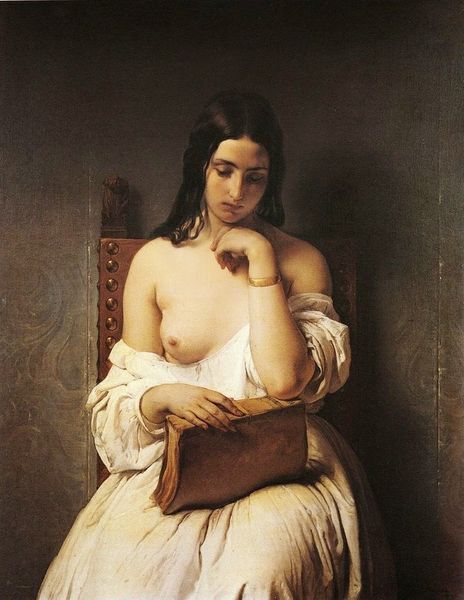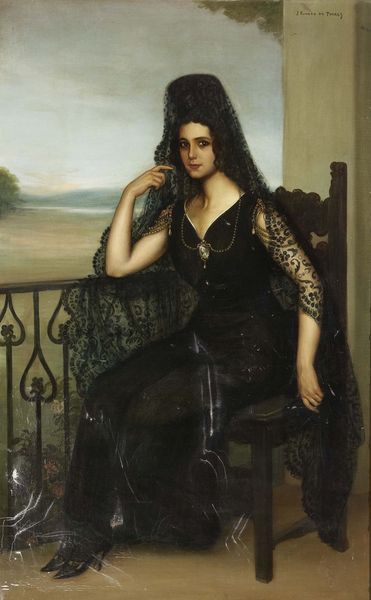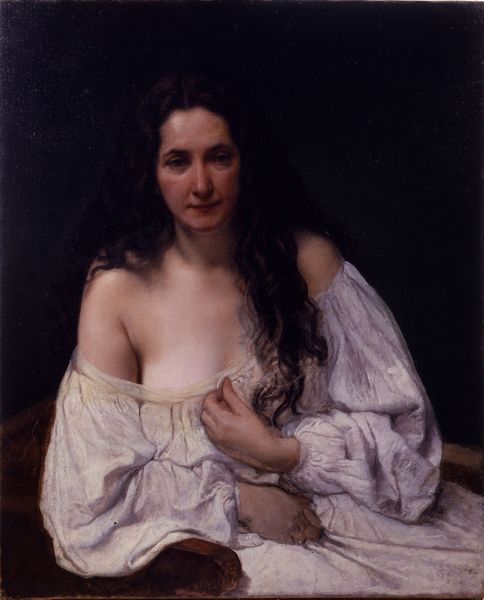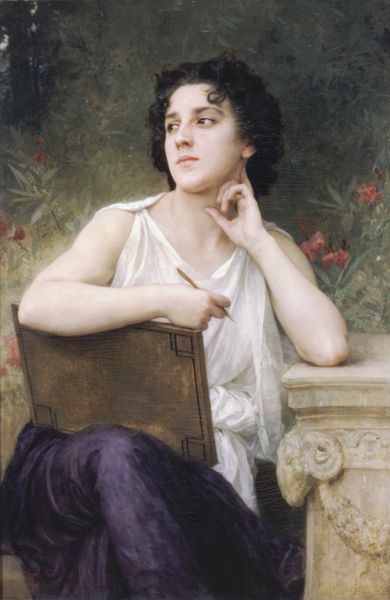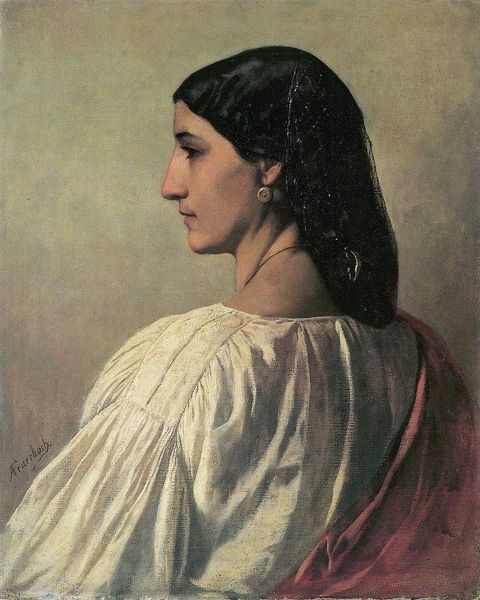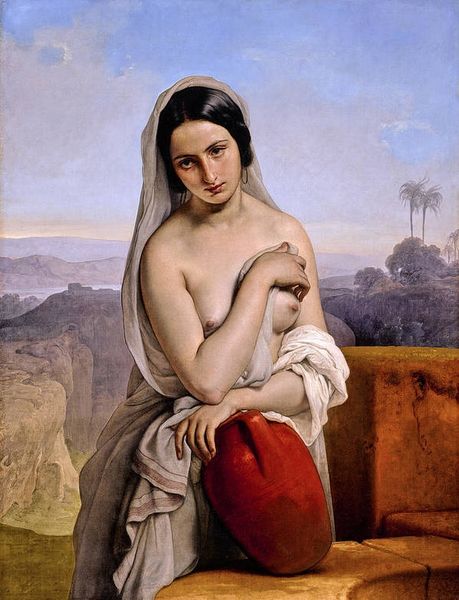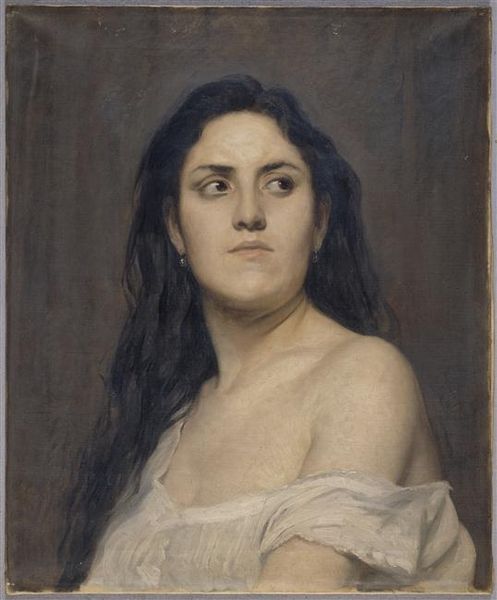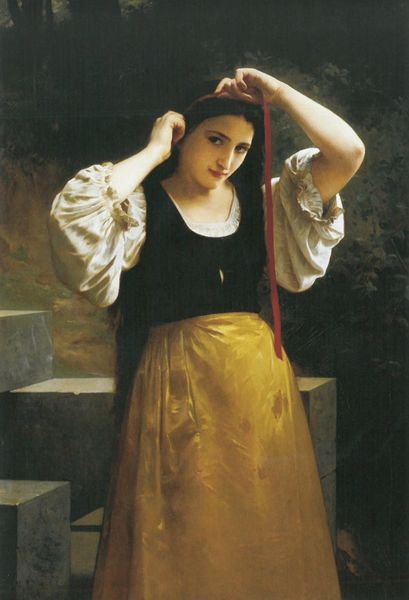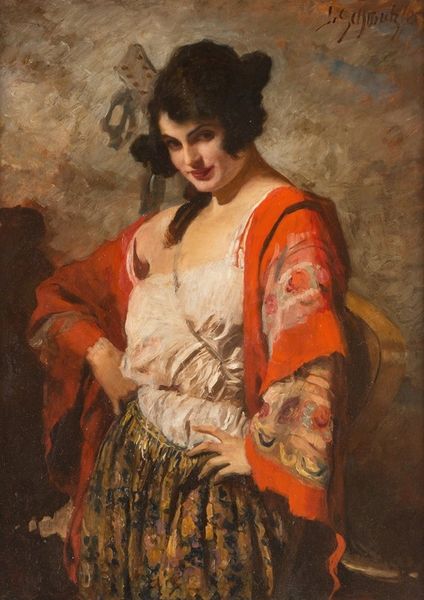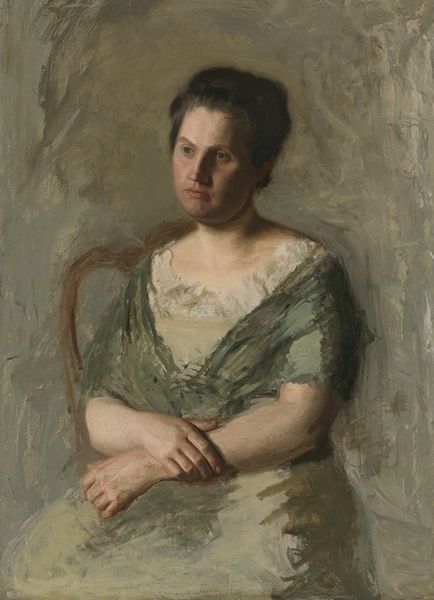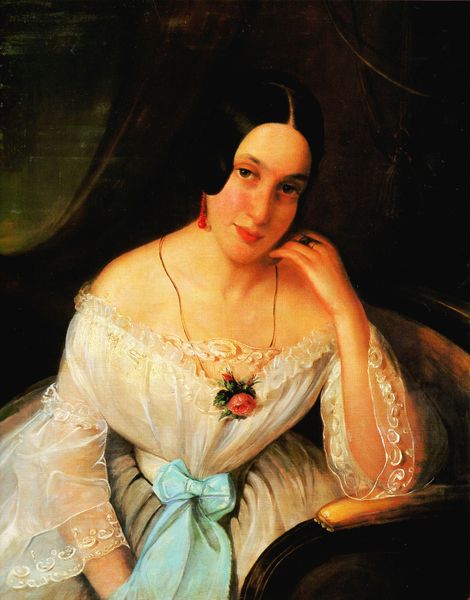
painting, oil-paint
#
narrative-art
#
painting
#
oil-paint
#
figuration
#
romanticism
#
chiaroscuro
#
history-painting
#
academic-art
#
nude
Dimensions: 90 x 70 cm
Copyright: Public domain
Editor: Here we have Francesco Hayez’s "Meditation on the History of Italy (1st version)," an oil painting from 1850. I’m immediately struck by the somber mood, emphasized by the almost monochromatic palette and the figure's melancholic expression. What are your thoughts when you look at it? Curator: My focus immediately shifts to the material conditions surrounding its creation. The oil paint itself – think of the pigments, the binders, where they were sourced. Consider the labor involved in grinding, mixing, and applying them to the canvas. That's a very tangible process reflecting Hayez's economic means and the access to certain resources in 1850s Italy. Editor: That's interesting. So, you see the physical making of the art as crucial to understanding it? Curator: Absolutely. The draped fabric, the cross, the book… These are commodities, products of a specific social and economic structure. Even her exposed breast isn't simply about sexuality; it's about challenging societal norms and expectations. But how is Hayez's Romanticism situated within Italy’s economic and social landscape at the time? What sort of statements is Hayez making here through the material choices available to him, and how they are depicted? Editor: So, her vulnerability isn't just emotional but a result of material forces and social commentary? It wasn't how I thought of the figure, but her social positioning definitely puts the "meditation on history" in another perspective. Curator: Precisely. Consider the socio-political climate. The rise of industrial production, the shifts in power structures – all are implicated in the creation and reception of this work. These things challenge the separation between high art and the everyday. Editor: This gives me so much more to think about – thanks for shifting my focus! Curator: Likewise. Thinking about art this way connects us to its creation in a way often missed when we are simply gazing.
Comments
No comments
Be the first to comment and join the conversation on the ultimate creative platform.
